Basbousa (Middle Eastern Semolina Cake)
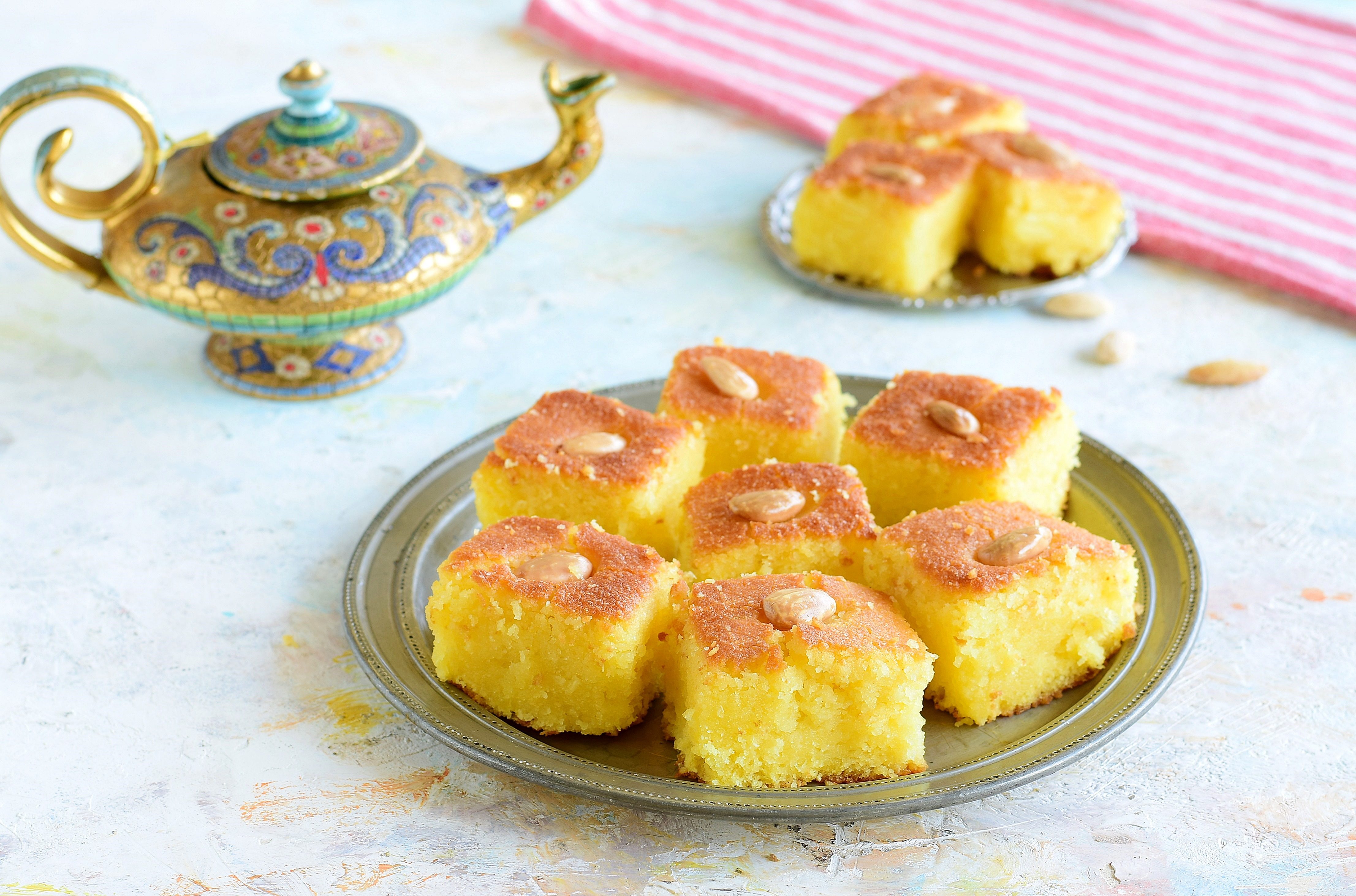;Resize,width=742;)
Basbousa is a typical Middle Eastern dessert made from semolina, covered in a sugar syrup flavored with rose water, and then decorated with whole almonds. Of very ancient origin, it is known by different names depending on the area of origin: harisa in Arab countries, revani in Greece and Turkey, safra in Israel. There are different versions and some ingredients may vary depending on the place where it is made. Whatever the recipe, however, it is a soft, fragrant and moist dessert, perfect for all occasions: from breakfast to a snack to a delicious after-dinner treat.
Once baked, the basbousa is cut into cubes or diamonds with a whole almond set in the center, giving it an unmistakable appearance. With a very romantic name, in Arabic, the word basbousa means "just a kiss", perhaps to symbolize the sweetness of the cake.
What is Basbousa and What Does it Taste Like?
Basbousa, a beloved dessert in the Middle East, is a semolina cake soaked in sweet syrup and often garnished with almonds. This cake, whose name translates to "just a kiss" in Arabic, symbolizes sweetness and affection. While its origins are ancient, Basbousa is known by various names in different regions. In Palestine and other Arab countries, it is often called "Harisa," while in Greece and Turkey, it is referred to as "Revani." Though the basic recipe remains the same, variations exist, with some regions adding coconut or yogurt for extra flavor.
Basbousa offers a delightful combination of sweet, rich, and slightly tangy flavors. The cake itself is soft and moist with a crumbly texture thanks to the semolina, giving it a unique mouthfeel. The syrup soaked into the cake adds an intense sweetness that perfectly balances the slight richness of the semolina. The almonds on top provide a subtle crunch and a nutty flavor that complements the softness of the cake. If coconut is added, it introduces a hint of tropical sweetness. Overall, Basbousa is a moist, flavorful, and comforting dessert that is not overly sweet but instead has a harmonious balance of flavors.
Is Basbousa the Same as Harissa?
Although Basbousa and Harissa are often used interchangeably in some regions, they are not exactly the same. Both are semolina-based cakes soaked in syrup, but the term "Harissa" is primarily used in Palestine and some other Arab countries, while "Basbousa" is more commonly used in Egypt and other Middle Eastern regions. While the recipes are very similar, regional variations might include different flavorings or garnishes, such as the use of yogurt or coconut, which can subtly alter the taste and texture.
Where Did Basbousa Originate?
Basbousa is believed to have originated in the Middle East, specifically in Egypt. It is a traditional dessert that has spread across various countries in the region, with slight variations in its preparation and naming. Over time, it became popular in other parts of the Arab world and beyond, including Turkey, Greece, and the Levant, making it a beloved dessert in many Middle Eastern cultures.
How Do You Pronounce Basbousa?
The word "basbousa" is pronounced as "buhs-BOO-sah".
Is Basbousa Healthy?
Basbousa, while delicious, is not considered particularly healthy due to its high sugar content and the use of semolina, which is a refined carbohydrate. The cake is also soaked in syrup, making it quite calorie-dense. However, it does offer some benefits, such as providing energy from the carbohydrates in semolina.
Can I Make Basbousa Without Eggs or Yogurt?
Yes, Basbousa can be made without eggs and yogurt. Many egg-free and dairy-free variations exist, often using alternatives like plant-based yogurt or simply replacing eggs with ingredients like mashed bananas, applesauce, or flax seeds mixed with water to help bind the ingredients.
What is The Right Oven Temperature for Basbousa?
The right oven temperature for baking Basbousa is typically around 350°F (175°C). This allows the cake to bake evenly, becoming golden brown on top while staying soft and moist inside.
How Long Does Basbousa Last?
Basbousa can last for about 3-4 days when stored at room temperature in an airtight container. If refrigerated, it can stay fresh for up to 1 week. The syrup helps preserve its moisture, but it's best enjoyed within a few days for optimal flavor and texture.
Can Basbousa Be Frozen?
Yes, you can freeze Basbousa. To freeze, wrap the cake tightly in plastic wrap or aluminum foil and place it in an airtight container or freezer bag. It can be stored in the freezer for up to 3 months. When ready to eat, simply thaw it at room temperature or warm it gently in the oven.
Ingredients
How to Make Basbousa
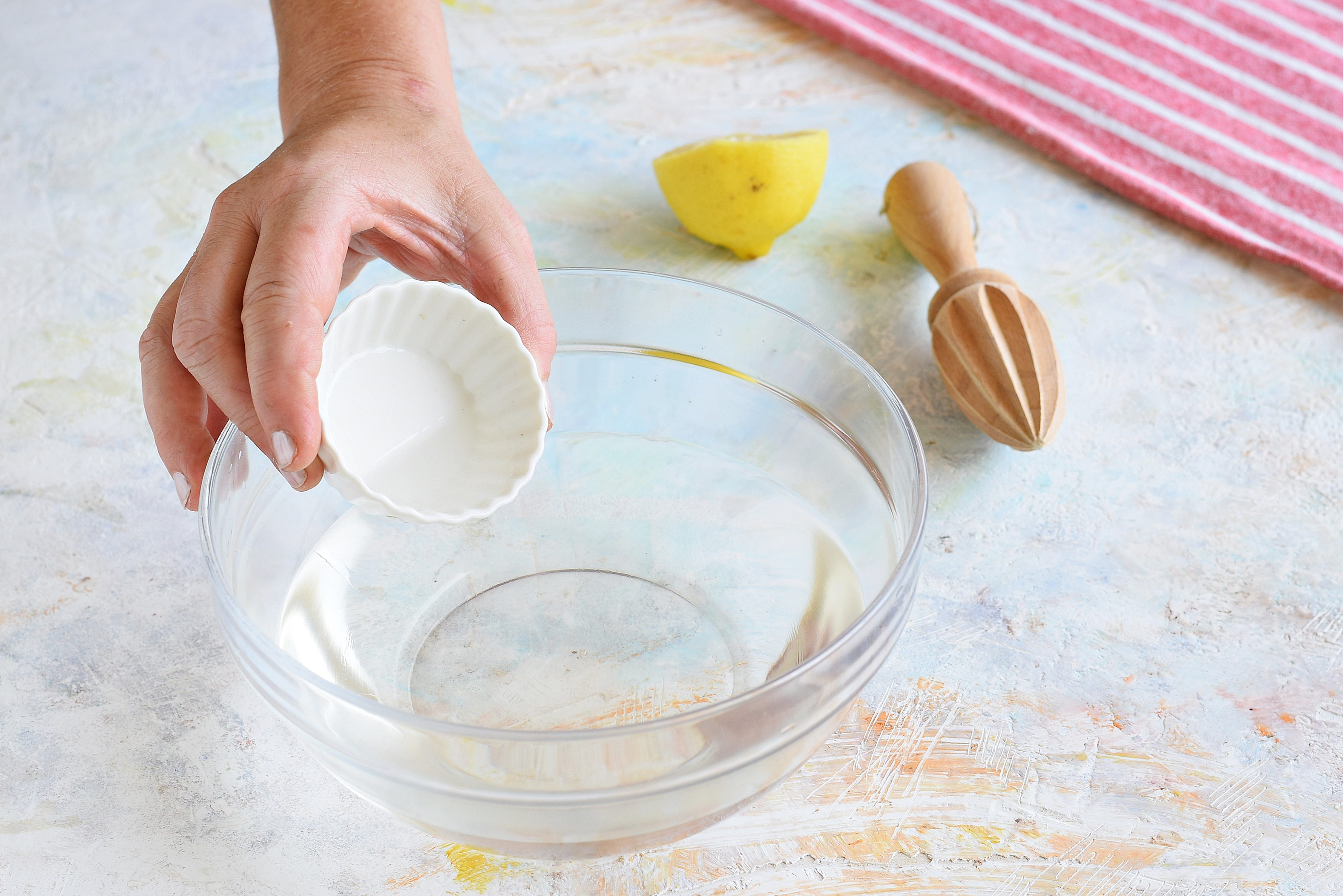;Resize,width=712;)
First prepare the syrup: bring the water with the sugar to a boil and simmer until the sugar has dissolved, then pour into a bowl and add the rose water and lemon juice.
First prepare the syrup: bring the water with the sugar to a boil and simmer until the sugar has dissolved, then pour into a bowl and add the rose water and lemon juice.
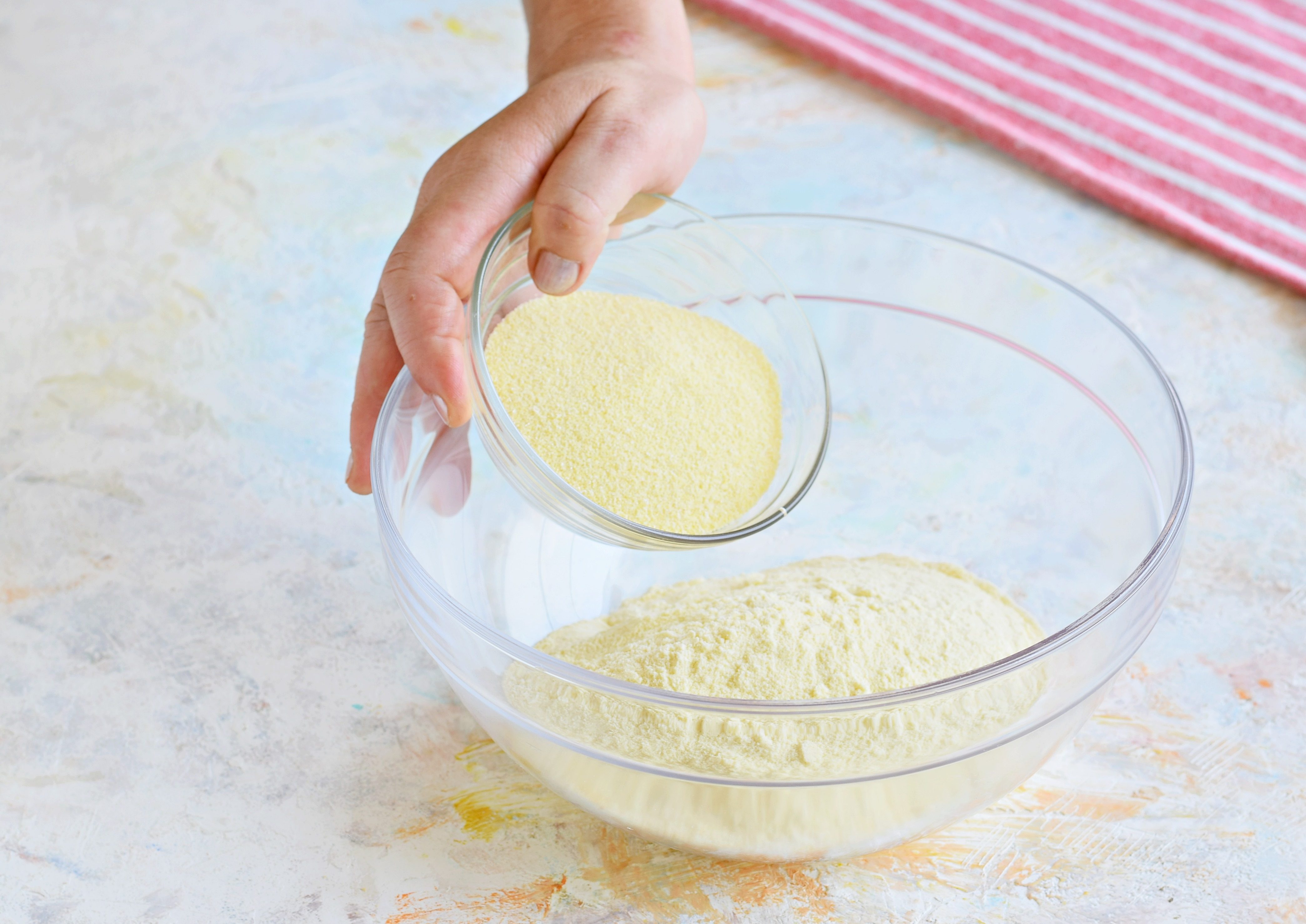;Resize,width=712;)
In a bowl put the semolina and the coarse semolina.
In a bowl put the semolina and the coarse semolina.
;Resize,width=712;)
Add the coconut, sugar and baking powder.
Add the coconut, sugar and baking powder.
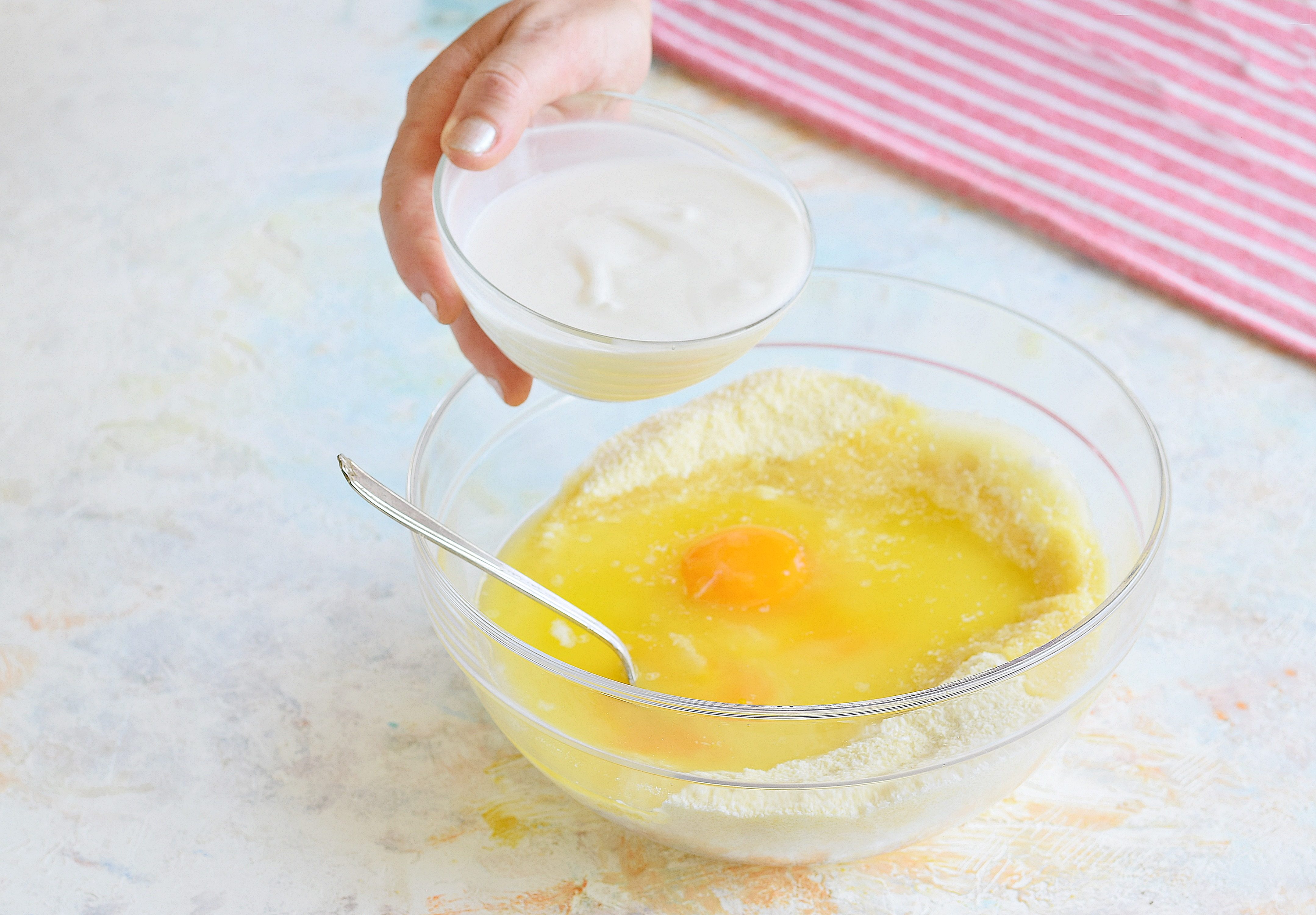;Resize,width=712;)
Add the melted butter, the 2 eggs and the yogurt.
Add the melted butter, the 2 eggs and the yogurt.
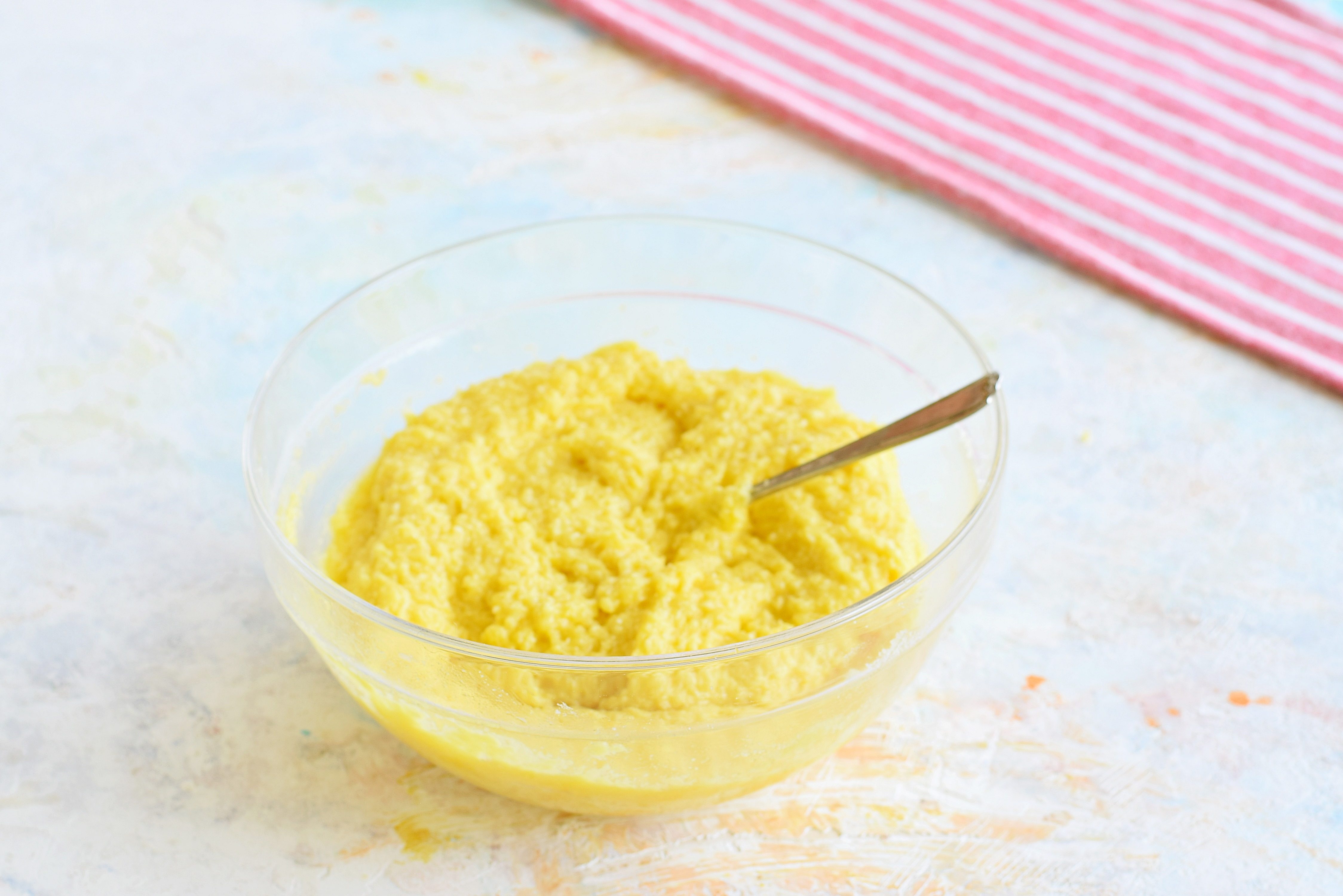;Resize,width=712;)
Mix all the ingredients well.
Mix all the ingredients well.
;Resize,width=712;)
Then pour the mixture into a well-buttered rectangular or square pan, level it with a wet spatula, make square cuts with a knife and place an almond in the center of each square, then bake at 350°F/175°C for about 35 minutes in a static oven.
Then pour the mixture into a well-buttered rectangular or square pan, level it with a wet spatula, make square cuts with a knife and place an almond in the center of each square, then bake at 350°F/175°C for about 35 minutes in a static oven.
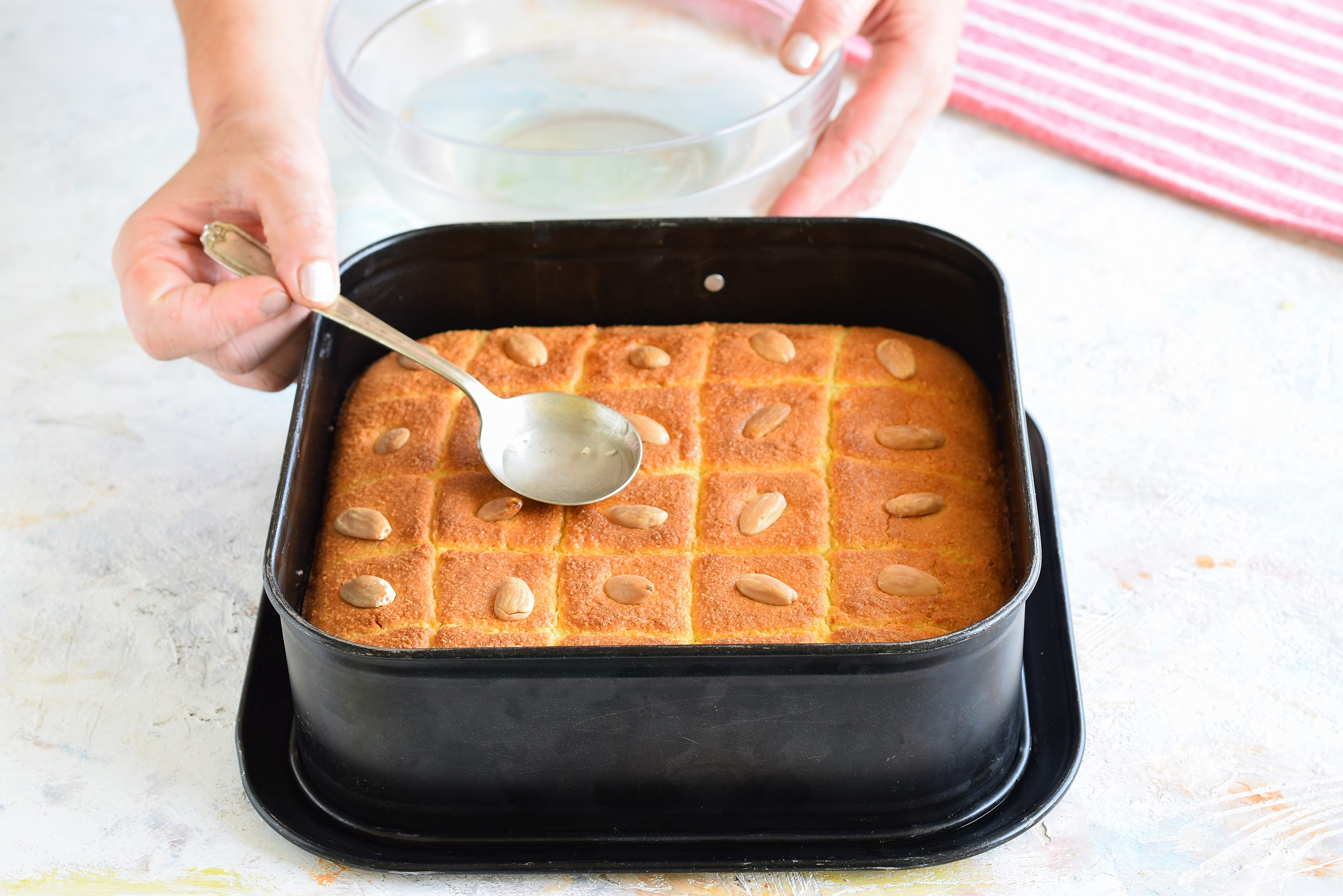;Resize,width=712;)
Once the basbousa is cooked, moisten it with the syrup and bake again at 350°F/175°C for about 10 minutes.
Once the basbousa is cooked, moisten it with the syrup and bake again at 350°F/175°C for about 10 minutes.
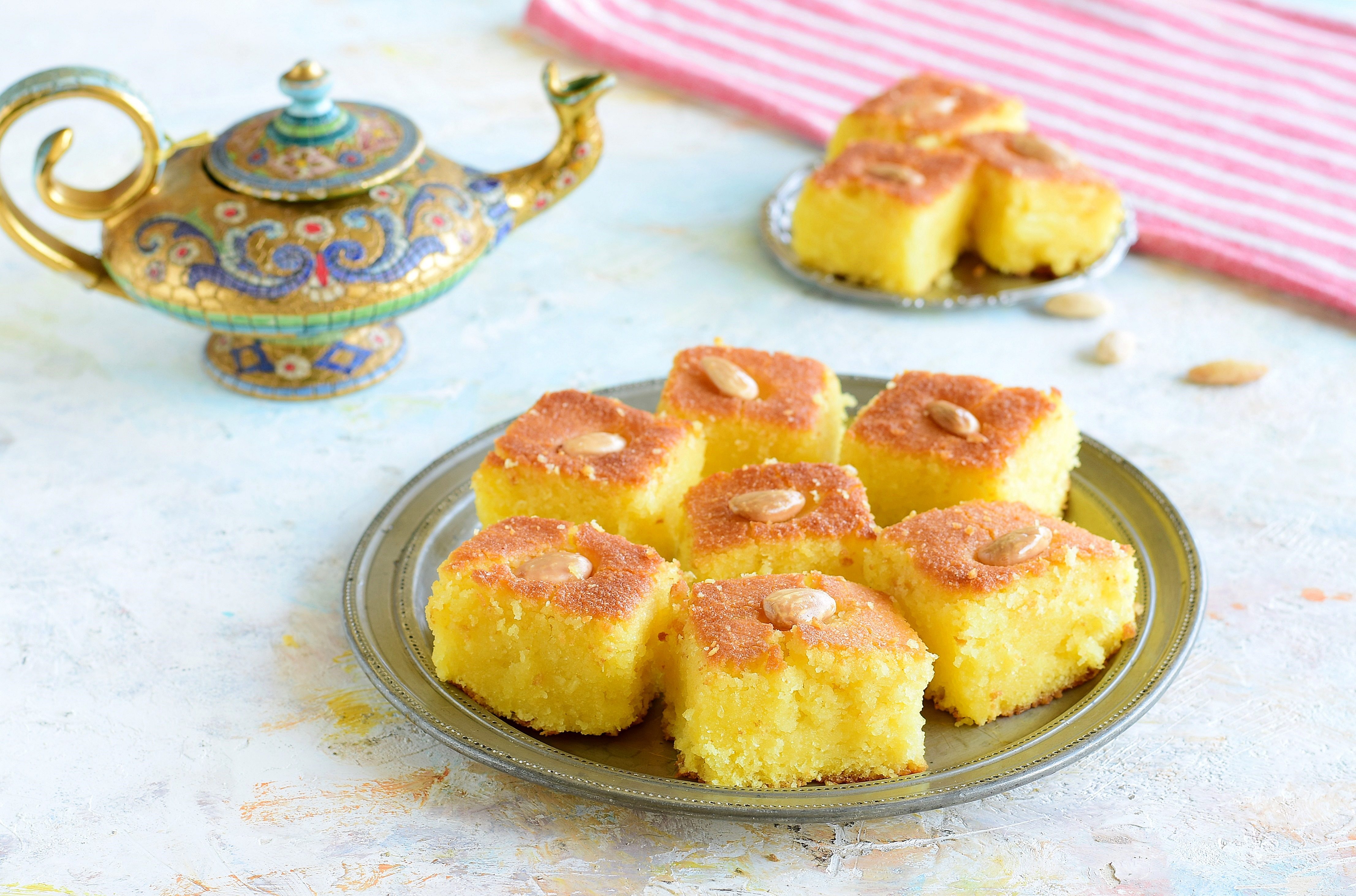;Resize,width=712;)
Let it cool and enjoy!
Let it cool and enjoy!
;Resize,width=767;)

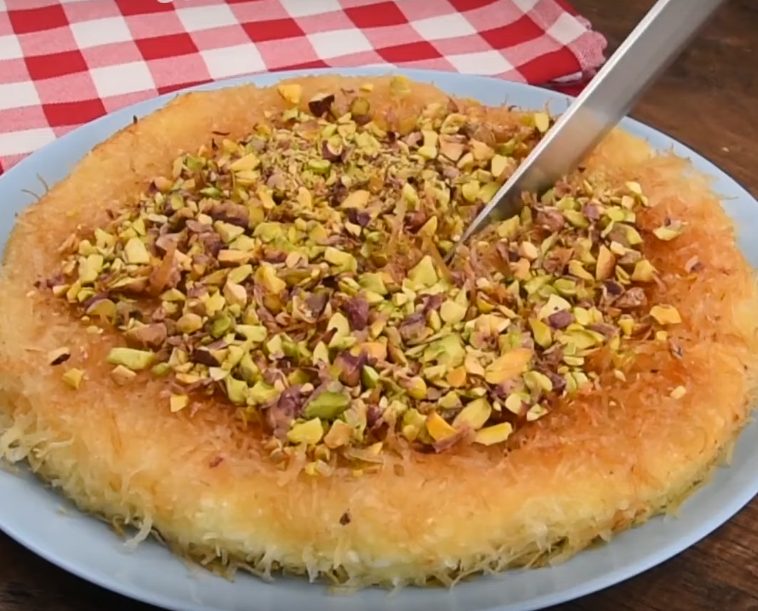;Resize,width=712;)

